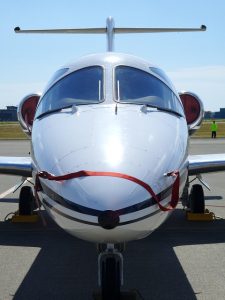
Fuses play an important role in electrical systems. Consisting of a small conductive core encapsulated in a nonconductive material, they protect electrical devices from overcurrent. You can find fuses in homes, buildings, cars, appliances, solar panels, high-voltage systems and even airplanes. Here’s everything you need to know about aircraft fuses.
Why Airplanes Have Fuses
Airplanes have fuses for the same reason other electrical systems have fuses: to protect against overcurrent. A typical airplane has hundreds if not thousands of electrical devices, including radios, GPS, flight control systems, cockpit displays, cabin lights and more. If overcurrent occurs, these devices may become damaged or destroyed, rendering them inoperable.
The Basics of Overcurrent
Overcurrent is an electrical phenomenon that involves excessive current. The current passing through a device or conductor is greater than the conductor or device can handle, resulting in the production of heat.
Electrical currents generate heat. The stronger the current, the more heat it will produce. Devices and conductors can handle some heat, but they all have their limits. Exceeding this limit may result in the conductor or device melting or igniting.
How Fuses Protect Against Overcurrent
Fuses work by breaking the circuit in which they are used when the current is too strong. They are typically installed either “in line” or in a fuse box where they protect devices from overcurrent. If the current traveling to a given device exceeds the limit for which the device is rated, the fuse will blow.
Fuses blow by melting or physically breaking. When this occurs, the current can no longer travel through the fuse, thereby protecting the connected device from damage. The device will no longer receive electricity until the blown fuse is replaced. so the device won’t succumb to overcurrent-related damage.
Airplanes Use Fuses and Circuit Breakers
Most airplanes use a combination of fuses and circuit breakers to protect their devices from overcurrent. Fuses are more common with smaller airplanes because they’re lightweight and inexpensive, whereas circuit breakers are more common with large commercial airplanes.
Fuses and circuit breakers are both designed to protect devices from overcurrent. Fuses, though, are typically only good for a single use. Circuit breakers, on the other hand, are reusable. Circuit breakers consist of automatic electrical switches. If overcurrent occurs, the switch for that circuit will flip, thereby interrupting the flow of electricity. But even with the rise of circuit breakers, fuses remain an important part of aviation engineering.



